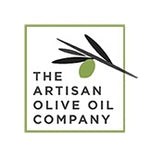According to data from ISMEA, the
Institute of Services for the Agricultural and Food Market, Italy is expected to produce around 208,000 tons of olive oil for the harvest 2022/2023. Whilst this represents a significant decrease compared to the previous year, it preserves Italy's position in the top 5 olive oil producing countries in the world.
Interestingly, according to Flos Olei, the international olive oil guide, the country counts more than 100 varieties of olive used in the production of olive oil. Olive grove can be found from the South of Sicily to Lake Garda in the North.

Whilst every region in Italy counts many different varieties, the Italian olive oil production is relatively concentrated in the South. According to data from Statista, Apulia, Sicily and Calabria represent the lion share of Italian olive oil volumes. These regions also tend to have larger olive groves and mills allowing to generate economies of scale.
Over the past 20 years, olive oil production methods have radically changed. Inspired by the tradition of fine wine making, regions such as Tuscany, have initiated a movement for the creation of premium olive oils. Similarly to the Grands crus in Chianti, olive oil producers have shifted to early harvest looking for stronger flavours and more complex profiles. Many small producers have followed this movement choosing to differentiate themselves with superior quality and particular oil profiles, leaving the mass markets for others. Today, they can be found all over Italy and creating a second market for finishing oils appreciated by home cooks and chefs.

